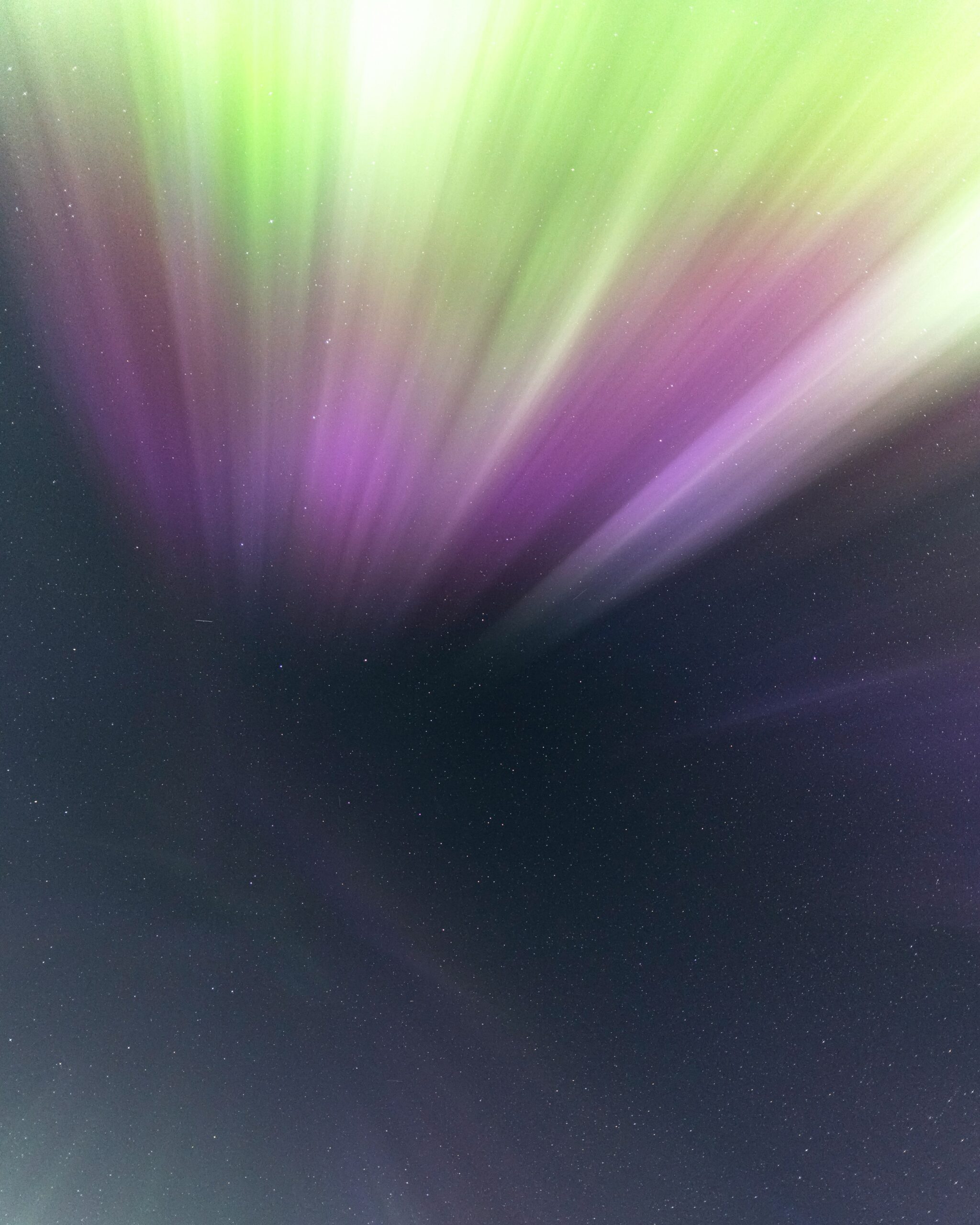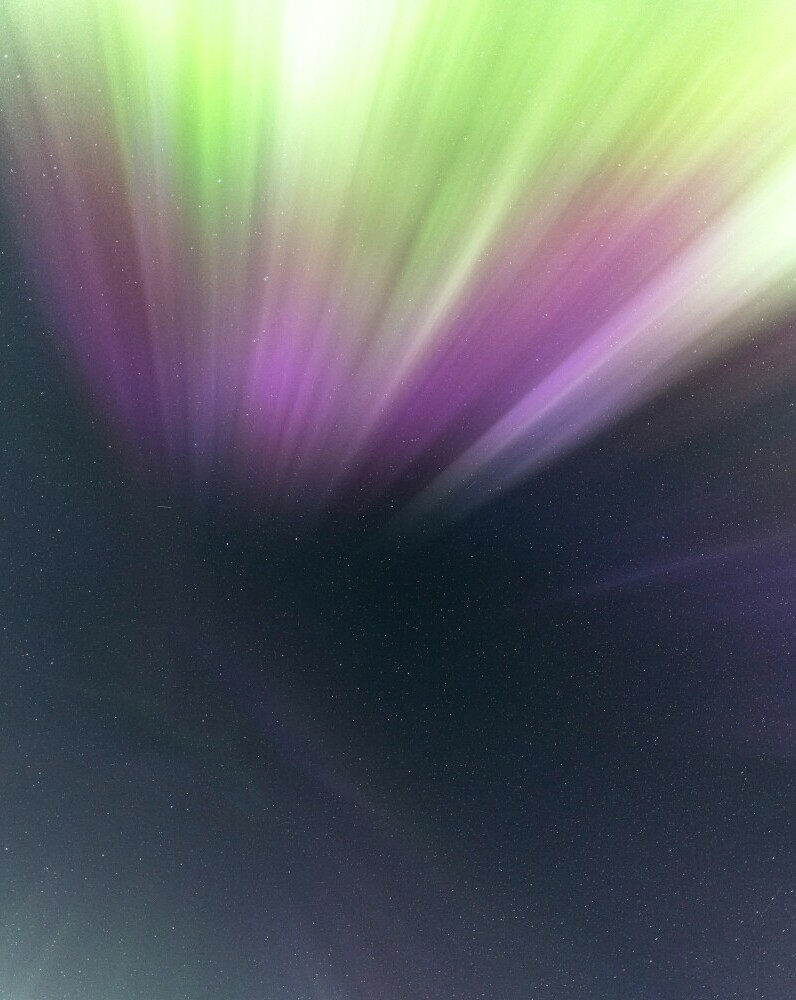 Christoph Nolte (2023) Älvsbyn kommune, Schweden [Photograph] Unsplash
Christoph Nolte (2023) Älvsbyn kommune, Schweden [Photograph] Unsplash
Solar activity, a realm of awe-inspiring events on the sun, encompasses the majestic solar flares and the powerful Coronal Mass Ejections (CMEs). These breathtaking explosions release immense amounts of energy and solar particles into space, some of which journey towards Earth. Occasionally, this solar material collides with Earth’s magnetic field, sparking changes known as geomagnetic storms.
During a solar maximum, a period of heightened solar activity that occurs approximately every 11 years, solar events such as solar flares and Coronal Mass Ejections become more frequent and intense. This increased solar activity significantly boosts the odds of witnessing the Northern Lights or Aurora Borealis, underscoring solar activity’s periodic and crucial nature and impact on Aurora’s visibility.
A geomagnetic storm can compress Earth’s magnetosphere and cause charged solar particles to cascade toward the poles. This flood of particles then collides with atmospheric gases, resulting in the vibrant colors that dance across the sky.
The solar wind, a continuous stream of charged particles blowing away from the sun, is a significant factor in creating the Northern Lights. Variations in solar wind speed, often caused by sunspots and Coronal Mass Ejections, directly influence the shape and size of the auroral oval, the region where the Northern Lights are most commonly visible. The direct influence of solar activity on the Northern Lights is fascinating and helps us understand this natural phenomenon.
Deciphering the Mysteries of the Aurora: From Solar Wind to Northern Lights
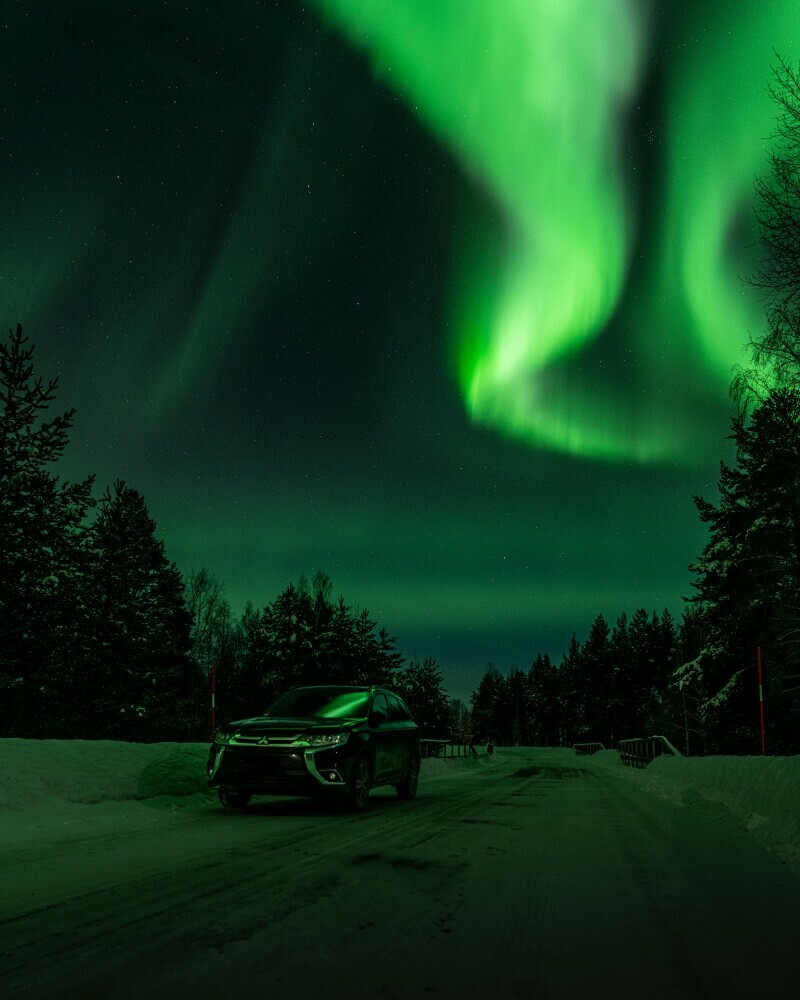 Christoph Nolte (2023) Manjärv, Schweden [Photograph] Unsplash
Christoph Nolte (2023) Manjärv, Schweden [Photograph] Unsplash
The aurora, known as the Northern Lights or Aurora borealis in the Northern Hemisphere and as the Aurora australis in the Southern Hemisphere, isn’t just a stunning spectacle; it’s a visual testament to the powerful interactions between our planet and the sun. The process begins far from Earth with the solar wind, and our observations and understanding contribute to our knowledge of this natural wonder.
This stream of charged particles emanates from the sun, carrying pieces of the sun’s magnetic field. When these particles encounter Earth’s magnetic field, most are deflected, showcasing the protective function of our planet’s magnetic shield. However, some particles get trapped and channeled toward the magnetic poles. Here, in regions aptly termed the ‘auroral ovals,’ these particles collide with gases in our atmosphere, and the energy released during these collisions manifests as the beautiful aurora.
Understanding space weather conditions is crucial for predicting the intensity and frequency of the aurora. One vital metric scientists and aurora enthusiasts use is the Kp index, which quantifies geomagnetic disruption on a scale of 0 to 9. A higher Kp index indicates a greater likelihood of auroral activity and, thus, a higher chance of Northern Lights visibility.
In the next section, we’ll explore the art and science of Solar cycles, the tools experts use to predict when and where the aurora will appear, and how you can leverage this knowledge to witness this incredible phenomenon.
The Art and Science of Aurora Forecasting: Tools and Techniques
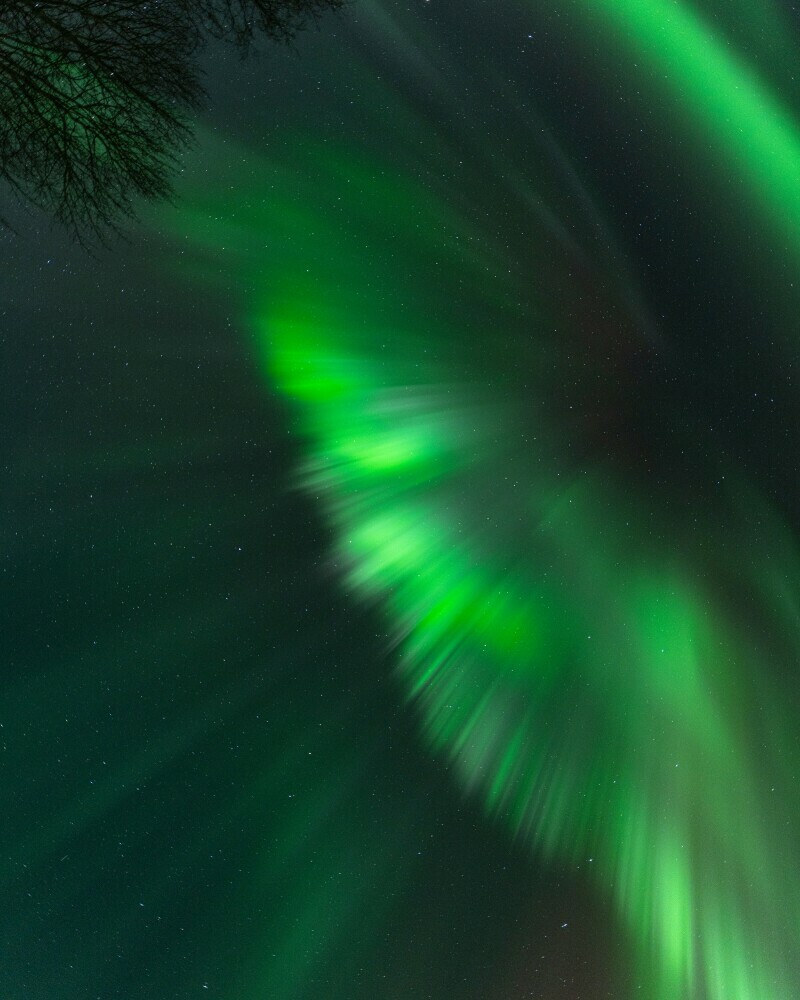 Christoph Nolte (2023) Manjärv, Schweden [Photograph] Unsplash
Christoph Nolte (2023) Manjärv, Schweden [Photograph] Unsplash
Predicting the dance of the Northern Lights across our skies is scientific and, to some extent, an interpretative art. At the heart of this process are sophisticated tools that allow scientists and enthusiasts to anticipate when and where the aurora will appear.
Observatories around the globe, along with satellites orbiting our planet, serve as the eyes peering into space, monitoring the sun’s behavior. They detect solar flares and Coronal Mass Ejections (CMEs), key indicators of potential auroral displays.
Solar observatories provide real-time data on sunspot numbers and solar wind conditions, which is essential for calculating the potential intensity of geomagnetic activity. The information gathered shapes the predictions of space weather events that could significantly increase aurora visibility.
Space weather prediction centers, like the NOAA Space Weather Prediction Center, issue forecasts similar to how meteorological services predict thunderstorms. They use data from satellites, like the Advanced Composition Explorer (ACE), to track solar emissions headed toward Earth.
A crucial tool for viewing the aurora is the Kp index, a global geomagnetic storm index ranging from 0 to 9. A higher Kp index value suggests a greater probability of auroral manifestations.
Several apps and websites offer aurora forecasting services for those looking to witness the aurora borealis personally. These platforms often provide real-time Kp index readings, alerts for increased auroral activity, and predictions on the best viewing times based on current and forecasted space weather conditions.
While tools and technology are available for predicting the aurora, interpreting space weather data can be challenging. Regardless of predictive tools, clear skies and minimal light pollution are essential for a successful viewing experience.
Maximizing Your Aurora Experience: Practical Tips for Viewers
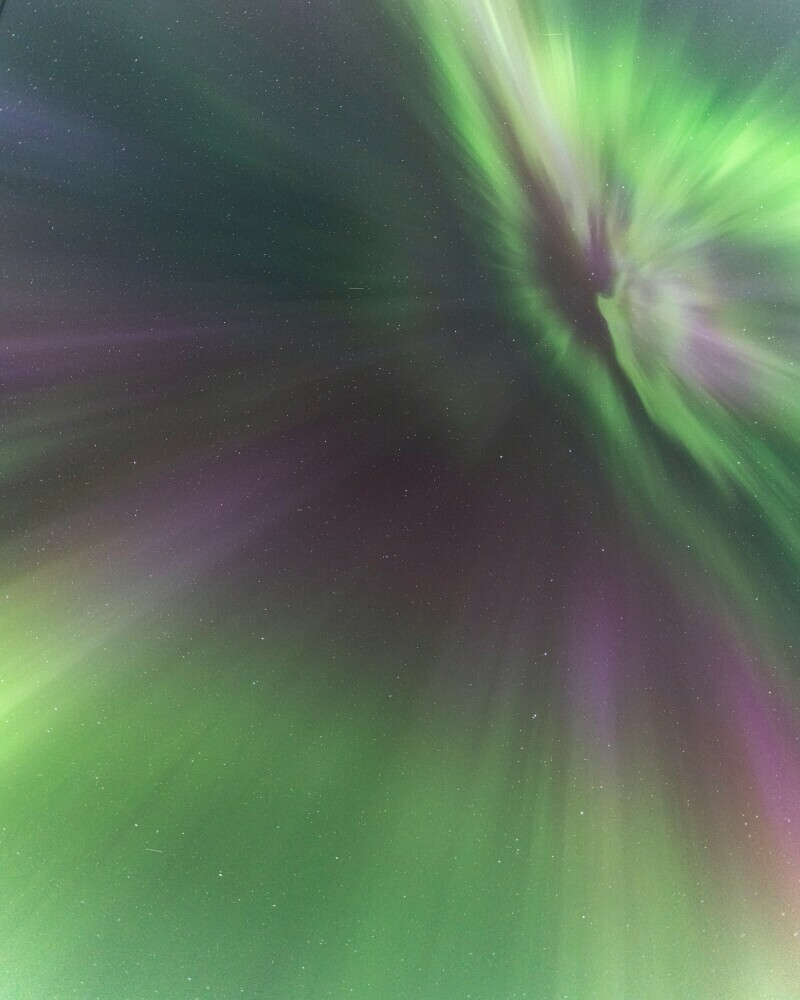 Christoph Nolte (2023) Älvsbyn kommune, Schweden [Photograph] Unsplash
Christoph Nolte (2023) Älvsbyn kommune, Schweden [Photograph] Unsplash
When aspiring to witness the Northern Lights, comprehending solar activity’s influence is only the preamble to the adventure. Solar activity, including phenomena like solar flares and CMEs, significantly impacts aurora visibility; understanding this interplay can enhance your viewing experience.
Knowing WHEN and WHERE to look for the polar lights is paramount. The solar cycle plays a role here, with peaks (solar maximum) and troughs (solar minimum) dictating the frequency and intensity of auroral displays.
Equip yourself with up-to-date aurora forecasts, often including the Kp index—an invaluable tool indicating geomagnetic activity. A higher Kp index suggests better chances of witnessing the aurora’s dance, though patience is advisable as exact timings are fluid.
Selecting an ideal viewing spot is crucial. Aim for areas within the auroral oval, away from the light pollution of urban settings. The magnetosphere’s interactions are decisive here, presenting the Northern Lights in full splendor.
As for timing, the equinox months of March and September generally yield more frequent auroral activity due to the alignment of the Earth’s geomagnetic field with the solar wind.
Lastly, keep watch for SPACE WEATHER ALERTS. A predicted solar storm can signal an upcoming display of auroras worth braving the cold for. Remember, witnessing the auroras is a blend of precise planning and serendipitous moments—be prepared, stay persistent, and nature may reward you with a mesmerizing light show.

